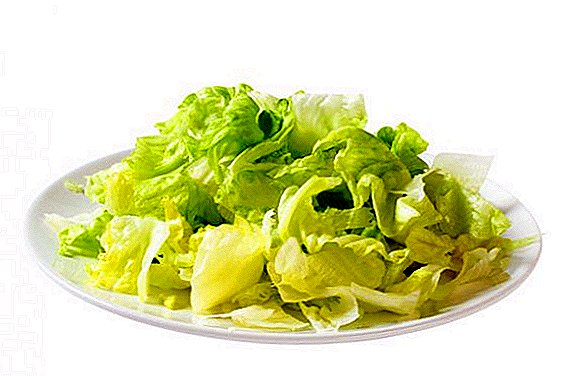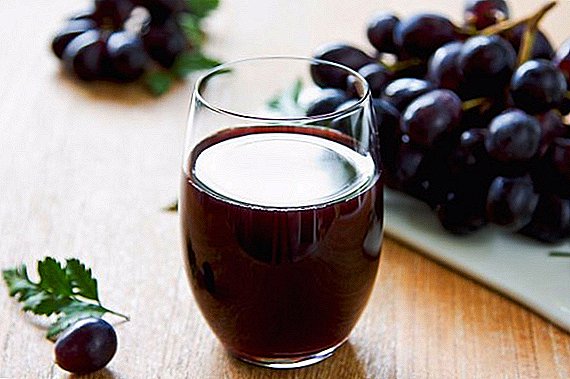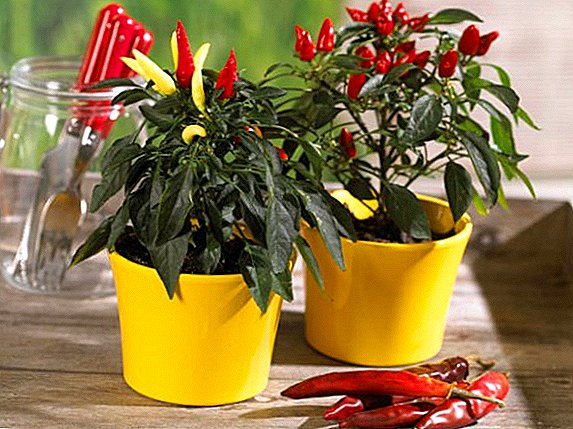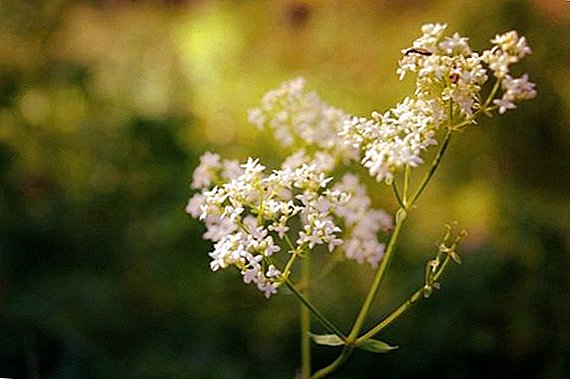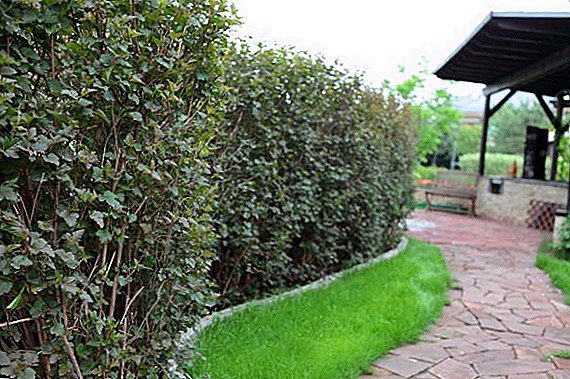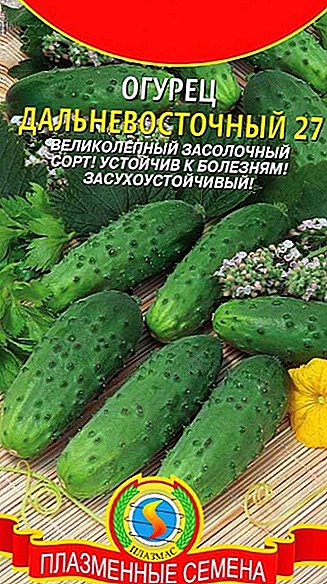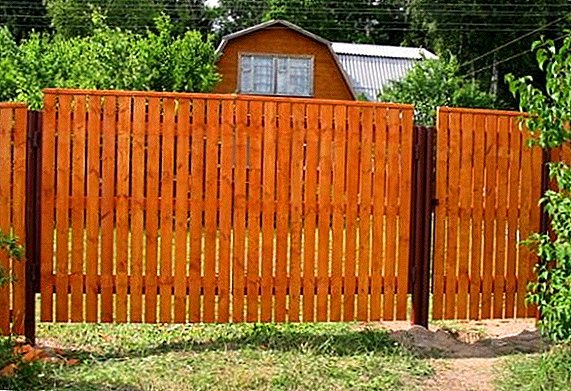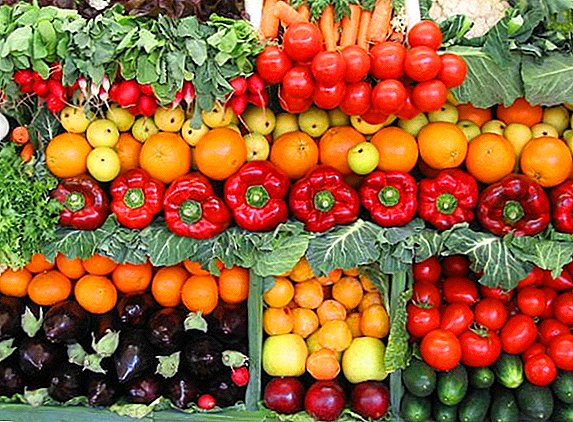 Perhaps you have never heard such a phrase as a family of warren. Although in fact you are well acquainted with its representatives. And many of them are often consumed as food. For example, it is tomatoes and potatoes. But, in addition to vegetable crops, among this family there are medicinal and ornamental. You will learn more about them and their cultivation in this article.
Perhaps you have never heard such a phrase as a family of warren. Although in fact you are well acquainted with its representatives. And many of them are often consumed as food. For example, it is tomatoes and potatoes. But, in addition to vegetable crops, among this family there are medicinal and ornamental. You will learn more about them and their cultivation in this article.
Description
Solanaceous - This is a family of dicotyledonous spinepolepid plants. Among them are potatoes, eggplant, tomato, vegetable pepper, tobacco, steaming and others. True, in this family there are also poisonous brothers - for example, dope and henbane.

A family of nightshade is presented in the form of grasses, upright or creeping shrubs, and sometimes even small trees. Today, there are about 2,700 species of nightshade. You can meet them almost all over the world.
You will be interested to know what features of cultivation and useful properties of black nightshade.
Vegetable crops
To begin, let's talk about the delicious solanaceae, that is, those that we used to eat.
- The tomato is saturated with glucose and fructose, proteins, organic acids, fiber, pectins, minerals. It is useful to those who suffer from gastritis, anemia, cardiovascular diseases. It is widely used in cooking and as a dietary product. Vegetable can be eaten raw, cook from it a variety of dishes, sauces, cook juice, canned. Grow vegetables in the open and in the ground. They love light and heat, do not tolerate very humid air, but they require constant watering, as well as protection from the wind. The optimum acidity of the soil for tomatoes is 6-7 pH. It is better for them to "live" in light soils.

Did you know? American colonists thought tomato was poisonous. Colonel Robert Gibbon Johnson undertook to prove the opposite in 1820, emptying a bucket of tomatoes on the steps of the court in Salem, New Jersey. Since then, tomatoes have begun to gain popularity rapidly.
- Eggplant - they have a lot of different minerals, vitamins, pectins, and potassium salts, which are necessary for the proper functioning of the heart muscle. Eating eggplants has a beneficial effect on the biliary tract, digestion, blood vessels, helps to increase hemoglobin, the release of excess cholesterol. Vegetable can be fried, boiled, canned, dried, used for sauce, gravy or caviar. Grow it, as a rule, by seedling method. Eggplant seeds begin to grow at a temperature of at least +15 ° C. Picking and transplanting a vegetable is difficult, so be attentive to it and be careful. They will fit loose, light, well-fertilized land. Eggplant loves open sunny patches.
- Pepper - there is a lot of vitamin C in it. In addition, it is saturated with vitamins P, A and group B, zinc, phosphorus, iron, iodine, and also capsaicin, an alkaloid useful for digestion. This vegetable we love to eat raw, applying it in various salads. Still with him get delicious stews, gravy, sauces, you can preserve it. Hot pepper is also used in medicine: medicines based on it are good for grinding, and pepper plasters are used for radiculitis, sprains, bruises, and neuralgia. It, like eggplants, is grown by seedling, and planted on sunny, protected from the wind areas. The land for this vegetable is prepared in the fall - cleaned, dug up and fertilized.
- Potatoes - it has a lot of vitamin C, complex carbohydrates, fiber. Tubers contain up to 25% starch. This is one of the main sources of potassium for us. In addition to cooking (and there it is used very widely - boiled, fried, stewed, put in soups and turned into chips), potatoes are used to make alcohol, and as the main raw material. The soil under the potatoes should be loose. Vegetables are usually planted in late April or early May in good weather. For planting, usually chosen large beautiful tubers. They are planted in holes dug in advance and covered with earth.



From vegetable crops to the family of Solanaceae also include: cherry tomatoes, "Mazarin", "Rocket", and green pepper
- Melon pear (sweet cucumber) - contains carotene, iron, vitamins of group B. You can eat it raw, pickle, cook jam. Propagate this vegetable seeds or cuttings. His homeland is South Africa. It is there that the vegetable "lives" best. Our plant can only be kept at home on a windowsill or in a heated greenhouse.
- Physalis - mainly distributed in South and Central America. We got along with the tomatoes, but never received much recognition. Physalis fruits are pickled, pickled, made into jam. True, physalis our summer residents usually grow as a decor, and edible fruits can be found on the plots extremely rarely. Grow it under the sun in fertile land. Tall species must be tied up. In order for the “lanterns” to ripen before the cold, at the end of the summer it is necessary to pinch (remove) the tops of the shoots. Once in 7 years, the bush is divided and seated so that it does not degenerate.
- Cocoon - this fruitful shrub from South America. We grow it in houses or greenhouses, and that is extremely rare. Cocoon today remains exotic in our area. But if you still want to breed it, then you should look for seeds in specialized stores. He is advised to grow the same way as eggplant seedlings.



Medicinal and poisonous plants
Then we will talk about the representatives of this family, which are used in folk and generally accepted medicine. True, despite this, they have poisonous properties.
- It is bitter-sweet (wolfberry) - its roots, leaves and stems are saturated with steroids, alkaloids, triterpenoids. It is used as an expectorant, anti-inflammatory, diuretic and choleretic agent, as well as skin problems. From the young stems and leaflets make infusions (by the way, decoctions of them will destroy the caterpillars and their larvae). The nightshade likes acidic land with high humidity. He is good even in the shade, he does not need much lighting, as well as shelter for the winter or some special conditions. The plant propagates by seed and layering. Seeds are planted in open ground under the ground.
- Belladonna (belladonna) - is present in the composition of the tablets, tinctures, suppositories, drops. It has analgesic and antispasmodic properties. Recommended for ulcers, cholecystitis, Parkinson's disease, bronchial asthma. Planted in low-lying areas with high humidity. The soil must be fertile, of light or medium composition, so that air and water penetrate without problems.


Did you know? The plant was given this name is not easy. After all, from the Italian "belladonna" translates as "beautiful woman", namely, the Italian seniors once had his juice dripped into the eyes to give them shine and expressiveness. Belladonna berries rubbed cheeks for a natural blush. Another name for the plant is mad berry. So he was called for atropine, which is part of the belladonna. He led a man into a state of extreme excitement.
- Black helen - it has potent alkaloids (scopolamine, atropine, hyoscyamine). Her oil is recommended for rheumatism, gout, bruises, and even as an anesthetic. In a small dosage, henbane medications are used as a sedative. By the way, henbane alkaloids are in Aeron tablets - from sea and airborne diseases. It is grown on fertile, friable, neutral soil. Before planting, the seeds are stratified.
- Datura ordinary - from its leaves emit an alkaloid hyoscine, a beneficial effect on the nervous system. They are also added to medications against whooping cough and asthma, so they have an antispasmodic effect. Datura is grown on loose, food-rich lands, fertilized with ashes. The plant is absolutely unpretentious.
- Scopolistic Carnioli - Its roots and rhizomes help with diseases of the eyes, livers, and ulcers. By the way, earlier in folk medicine, the plant was used for rabies (inside). Scopolia prefers a shadow; The land for it should be loose and wet. Watering is necessary regularly (especially in the hot period), but in moderation. Feeding scopolia is not needed, as well as shelter for the winter.



Find out what useful properties vegetables have: cucumbers, onions (onions, red, shallots, chives, batun), zucchini, pumpkin, peas, cabbage (white, red, Savoyard, color, Peking, Brussels, broccoli, kohlrabi, kale, pak -choy), beets.
- Mandrake - used in folk medicine: fresh juice from the root is good for rheumatism and gout, dry root - pain reliever for neuralgic and joint pains, digestive ailments, and the root rubbed and mixed with honey and milk is applied to tumors and edemas. Our mandrago is often raised at home (for this, it is better to take an autumn mandragora). Her put in a tall pot, laid out on the bottom of the drainage. The soil should be loose. In the summer the plant is abundantly watered, but rarely in the fall and winter. In warm time, the mandragora can be carried out in a container on the street, and in winter it needs only a warm room.
- Tobacco - in its composition contains nicotine, which is used in cigarettes and is highly addictive. The tincture of tobacco leaves is used for skin diseases and even oncology, juice is used to fight sore throat and malaria. There are antibacterial substances in its leaves; therefore, tobacco dust is often used against diseases and pests that attack plants, and cut tobacco leaves fight moths. Tobacco is sown after black steam or winter crops grown after black steam into loose earth. Can not be planted after beets and other solanaceous.


Important! These plants are poisonous. It is necessary to use them reasonably and only in small doses. If you have misused them and after that you feel unwell, consult a doctor immediately!
Ornamental plants
Solanaceae grow and just like a beautiful decor.
- Hybrid petunia - it is widely used for landscaping, including vertical. It is a heat-loving plant and even a drought-resistant, loving sun. Soil needs fertile for it. To grow petunias, for example, on a balcony, take a mixture of coarse-grained river sand, peat, turf and hardwood (1: 1: 2: 2). Protect petunia from wind and rain as it is very gentle.
- Ampel Calibraho is considered to be one of the best ampelous plants (with falling shoots) of plants among this family. They decorate balconies and terraces. It is possible to plant these beautiful flowers with the help of seeds and with the help of seedlings. They need a well-lit place and regular watering. With sufficient moisture, a calicrachoa can “outlast” direct sunlight without problems.
- Brugmansia is widespread in South America, but it is grown around the globe — in greenhouses, homes, and in open soil. In Latin America, Brugmancia treats tumors, abscesses, asthma, rheumatism, arthrosis, eye infections. And even before Columbus, its hallucinogenic properties were used for religious rites. The plant is planted from seeds: from January to March in light soil half a centimeter centimeter deep. After sowing, the ground should be moistened, covered with polyethylene or glass and kept at a temperature of + 20 ... +25 ºC and bright ambient light. As soon as shoots appear, shelter is removed. Plants are sprayed with warm water from a sprayer 2-3 times a day. When the seedlings give the fifth leaf, they are transplanted into separate pots or cups.



Important! The plant, like some other solanaceous crops, is also poisonous!
- Fragrant tobacco is thermophilic and light-loving, hates frost and prefers well-fertilized, moist loamy soil. The most fragrant is white tobacco. Its buds open at sunset and in bad weather. Today, undersized hybrids of fragrant tobacco have started to appear on sale - they can be grown on windowsills or balconies without any problems, they bloom for a long time. It is recommended to plant seedlings already sprouted into open soil: purchase seeds, in late February, plant them in a flat, shallow container with a glass lid or cover it with a transparent film.
- Bitter sweetheart - it is used not only as medicine, but also as a decor. He loves moisture, so it is successfully used in landscape design for landscaping reservoirs.
- Mock false pepper (Cuban cherry) - dwarf forms of plants contain in pots. From summer to autumn, bright red spherical fruits appear on it. Sowing is best in early spring. The plant will be suitable commercial soil, which is used for seedlings of tomatoes. After the appearance of two leaves, the plants dive into bulk containers, and somewhere later a month later they repeat the pick-up - already in separate pots. At the same time they are recommended to pinch. Cuban cherry will not tolerate drying, do not forget to feed it twice a month.
- Jasmine-shaped pascal - also used for ampel gardening. It blooms from mid-spring to mid-autumn with white flowers collected in clusters. For his growing need support, bright light, abundant watering and frequent sprinkling. Do not forget about the required temperature in winter - no less than + 14 ... +16 ºC.




As for the plants, also the family Solanaceae include: salpiglossis, Brugmancia, petunia grandiflora
As you can see, the nightshade family is very diverse. Here both vegetable crops, and medicinal crops (the main thing is to remember that they are mostly poisonous), and ornamental ones. In general, these plants are unpretentious, but still before planting it is worth asking if they require any special conditions. If you follow the advice of experienced gardeners or gardeners, then you all must succeed.


